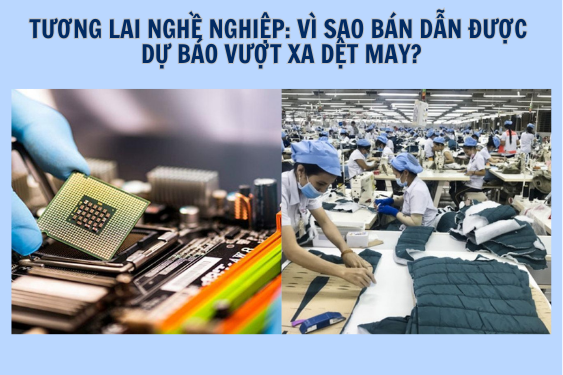
Vietnam is proving to be a crucial link in the global supply chain, thanks to the strong growth of its electronics and semiconductor industries. However, to remain competitive, attracting talent and importing high-quality labor have become indispensable factors. Let’s explore how labor importation strategies are transforming Vietnam’s electronics industry into the “new manufacturing hub” of Asia.
1. Labor Importation Strategy: A Driving Force for Development
For a long time, "labor importation" has meant more than just bringing foreign workers to Vietnam. Today, Vietnam is also focused on attracting talented Vietnamese professionals from abroad, bringing with them valuable knowledge and experience. According to reports, by 2030, Vietnam aims to train 50,000 semiconductor engineers to meet the rapidly growing market demand. This is not only a short-term solution but also a long-term strategy to increase the quality of the labor force in the sector.
According to VnEconomy, electronics components are at the top of Vietnam’s key export items, with revenue reaching nearly USD 18.87 billion in the first four months of 2024. The booming exports of electronics and semiconductors have attracted significant investors like Samsung, Intel, and Amkor, who are continuously expanding factories and hiring skilled workers, creating considerable job opportunities for highly skilled labor.
2. Human Resource Supply: The Key to Corporate Success
With the growing demand for recruitment, quality human resource services like GLA HR play a vital role in ensuring a plentiful and skilled workforce for the electronics industry. GLA HR not only helps search for and screen suitable workers but also participates in training programs, ensuring that employees have the necessary skills to engage in high-tech production. This is particularly crucial in the semiconductor industry, where precision and advanced technical skills are essential.
3. Investment Attraction Policies and Modern Infrastructure
To attract foreign investment, Vietnam has implemented numerous incentives, ranging from tax exemptions to financial support for high-tech projects. The government also encourages the development of specialized industrial zones to facilitate the growth of electronics and semiconductor businesses. Major industrial parks in Bac Ninh, Bac Giang, and Hai Phong are ideal locations for leading corporations, thanks to modern infrastructure and optimal support services.
4. Future Directions for Vietnam's Electronics Industry
Amid globalization, Vietnam continues to enhance its “labor importation” policies to attract skilled labor, particularly from Vietnamese professionals working overseas. This strategy, combined with high-tech industry development policies, will help Vietnam maintain the growth momentum of its electronics and semiconductor sectors, making the country an attractive destination for global investors.
Vietnam is on a strong growth trajectory, and the combination of domestic resources and international talent will be the key to propelling the country’s electronics industry forward, contributing to national economic prosperity.


